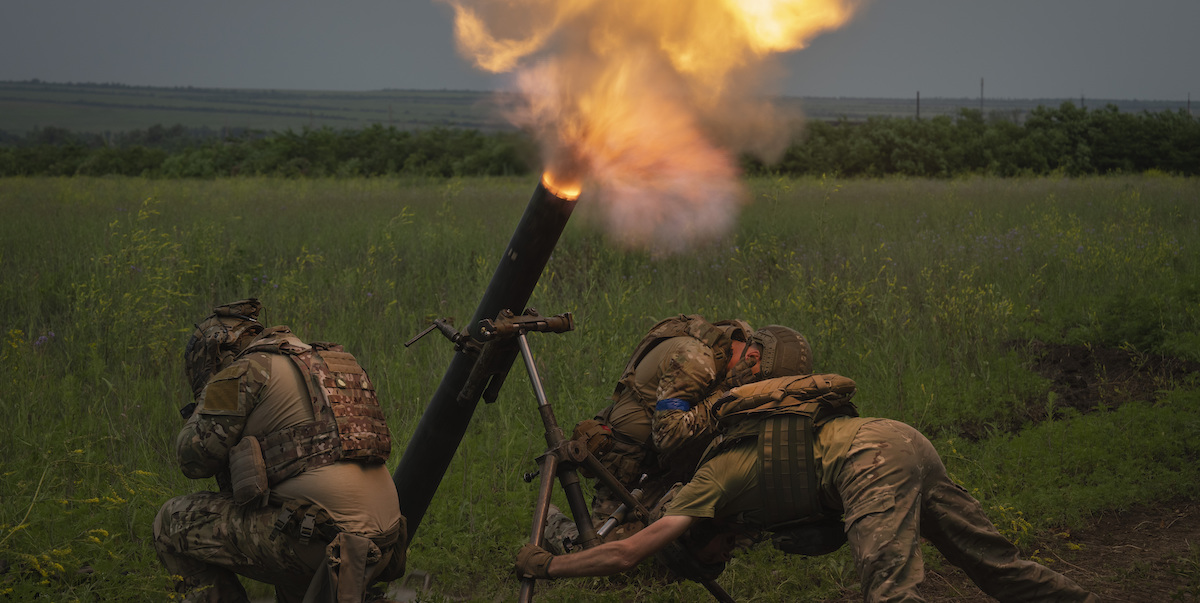More than 500 days have passed since the start of the Russian invasion of Ukraine and about a month since the Ukrainian counter-offensive in the eastern and southeastern areas of the country controlled by the Russian military. As many military experts and analysts predicted, the Ukrainian army has not made much progress so far and the counter-offensive is going rather slowly. This was also confirmed on Friday by Andriy Yermak, chief of staff of the Ukrainian president Volodymyr Zelensky, who speaking with some journalists said that “to date we are not advancing very quickly” and that if anything goes wrong “we will say it, without embellishments”.
In this month the Ukrainian army has reconquered about 250 square kilometers of land and some small towns of little military value. Breaking through the Russian defense lines is not easy at all, given that in recent months, in anticipation of the Ukrainian counter-offensive, Russia had set up trenches and fortifications which are slowing down the advance of the Ukrainians.
For example, sources in the Ukrainian military told newspapers that in the Zaporizhzhia region in the south-east of the country, the Russians have built a dense network of interconnected trenches that are difficult to detect by drones, and that the ground has been littered with mines. A Ukrainian commander of the 108th brigade told al Wall Street Journal that in order to advance in the region it would first be necessary to bombard the whole area and only then to let the armored vehicles penetrate to make room for the infantry. But this strategy would not be feasible at the moment, the Ukrainian commander said, due to the shortage of suitable military vehicles.
Above all, Ukraine currently lacks air forces capable of supporting the ground offensive with bombing: the Ukrainian air force consists mostly of a small number of Soviet-era fighter planes and helicopters, MiG-29s and Su- 27, some supplied by former Eastern Bloc allies who are now part of NATO. Precisely for this reason, President Volodymyr Zelensky has been asking the Western allies to send the most modern F-16 fighters to Ukraine for more than a year.
These planes are used from 1976 and they are still good and sophisticated fighter jets, even if the United States is about to replace them with newer and more performing F-35s. They are still very widespread, supplied to 25 military air forces in Europe and in the world: in short, there are large quantities of them. They are also called “Fighting Falcons” and are manufactured by Lockheed. In May, during the G7 meeting in Hiroshima, Japan, US President Joe Biden said he would not oppose Western allies sending American-made F-16 military jets to Ukraine. At the moment, however, it is not officially known when the first F-16s will arrive in Ukraine.
According to various military analysts, the slowness of the Ukrainian advance would also be a strategy to buy time and better study the positions and weak points of the Russian defences. This would be the reason why so far Ukraine has not used the dozens of German-made Leopard 2 tanks it has had for a few months, so as not to risk them being damaged by mines or wasted in actions where a aerial bombardment.
Meanwhile, Ukraine received the first shipment of cluster bombs promised last week by the United States on Friday. The supply had been discussed very critically because cluster bombs are weapons known to cause serious injuries to civilians and prohibited by a 2008 UN Convention, a treaty that was signed by more than 100 countries (among which, however, there are no United States, Ukraine and Russia). They are canisters that carry tens to hundreds of smaller bombs, also known as “submunitions,” and can be dropped from an aircraft or dropped from land or sea.
When they reach a predetermined height, depending on the affected area which can be as wide as several football fields, the containers open and the bombs inside are distributed, “in clusters”, over the area below. There are various types of submunitions but almost all are designed to explode on impact and the most common contain shrapnel designed to kill people or destroy armored vehicles such as tanks. According to some estimates, 94 percent of those killed or injured by cluster bombs are civilians, nearly 40 percent of whom are children, although these estimates are likely skewed by the fact that militaries do not provide accurate figures on soldiers. injured or killed by certain weapons.
